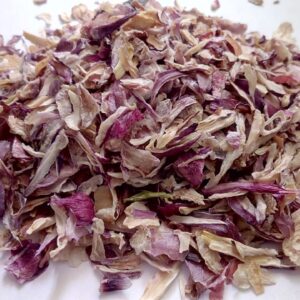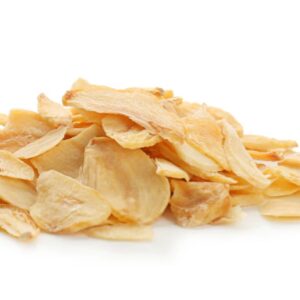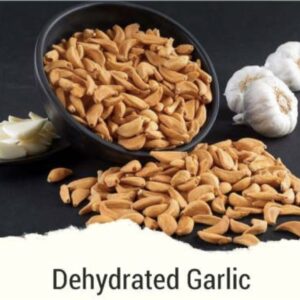Top 7 Health Benefits of Using Dehydrated Onions in Your Meals
Onions are one of the essential ingredients in kitchens all over the globe, adding characteristic flavour and an incredibly impressive range of nutrients. Fresh onions are widely available, but dehydrated onions are increasingly acquiring more popularity as they represent very convenient and long-shelf-life products, retaining their complete nutritional value. In short, dried onions-dried, dehydrated, or dried simply means with the evaporation of moisture-left in a nutrient-rich food item that is easy to stock and use. In this blog, we’ve explored the top seven health benefits of using dehydrated onions in your meals and how this versatile ingredient can enhance not only your culinary experience but also your health. 1. Drenched in Antioxidants to Curb Free Radicals These are actually such highly potent antioxidant products of dehydrated onions, particularly quercetin. Some even consider quercetin to be anti-inflammatory and an anti-cancer agent, antioxidants neutralise free radicals. These are unstable molecules that cause oxidative stress and develop into chronic diseases-whether it’s cancer, heart disease, or even diabetes. Summary: Dehydrated onions are rich in flavonoids such as quercetin, noted for its antioxidant effects. Consumption of which regularly will help to cut down the risk towards chronic diseases through the function of fighting oxidative stress. Quercetin also facilitates maintaining a healthy condition of the heart by further reducing the blood pressure and lowering the amount of cholesterol in the body. Pro Tip: Dry onions can simply be added to your salads, soups, and even smoothies to enhance antioxidant load in your diet. 2. It Upscales Immunological Functioning and Delays Infections The best advantage of dehydrated onions is that it can boost the power of your immunity system. Onions contain a lot of sulphur compounds, which have been proven to be potent against microbes, and they will protect you from infections as well as your strong immunity. They also retain their sulphur compounds even in the form that is dehydrated, making them excellent for those who fancy healthy products. Summary: Some of the sulphur compounds added to dried onions include antibacterial, antiviral, and antifungal properties. These will help resist some of the regular common infections like colds, flu, or other respiratory ailments if you consume them daily. Dried onions also contain vitamin C as a good source, which helps to improve the immunity system of the body. Pro Tip: Add dehydrated onions to your daily recipes to give that immunity-boosting feature to your food preparations. 3. It aids in Improving Digestive Health and Evits Constipation High amounts of dehydrated onions are rich in dietary fibre. The simplest way towards a healthy bowel is through a diet that contains the right amount of dietary fibre, which helps individuals avoid the problem of bowel movement/constipation by facilitating the regulation of movements within the bowel. On dehydration, it loses nothing from the fibre content in onions; hence, this form of onions is easily incorporated into an individual’s diet with increased amounts of fibre. Summary: Dehydrated onions are also full of inulin, which is a prebiotic fiber and makes sure that you feed the good bacteria living inside your gut. Consuming dehydrated onions daily will guarantee the existence of a healthy gut microbiome; hence, digestive procedures will run smoothly, and nutrients will be absorbed more efficiently. Fibre ensures that constipation does not occur; thereby, all digestive procedures are carried out much more smoothly. Pro Tip: Sprinkle the dehydrated onions throughout soups, stews, or casseroles to top off your fibre intake for the day. 4. Prevents Blood Sugar Level Control The other health benefit of it that very few people know about is its ability to regulate blood sugar. Onions which contain compounds found to be involved in the improvement of insulin sensitivity while contributing to lowering blood sugar make them a good food intake for those with or at risk of having the disease. Summary: Dried onions contain high levels of sulphur compounds that elevate the regulation of glucose by strengthening the sensitivity to insulin. It has been proven that consumption of onions on a daily basis can reduce fasting blood glucose in diabetic patients with type 2 diabetes. The quercetin is the other content in onions. This also is thought to interfere with blood sugar spikes by preventing the same enzymes that break down carbs. Pro Tip: Dried onions can add a ton of zesty flavors to your food and keep your blood sugar in check. 5. Helps Maintain Heart Health Dehydrated onions are heart-friendly. They reduce the level of cholesterol in your body, keep blood pressure within a healthy range, and inhibit the dangerous formation of plaques inside your arteries. The antioxidants and sulfur compounds in onions work to keep the heart in good condition by fighting off dangerous inflammation and encouraging good cholesterols, which is High-Density Lipoprotein or bad cholesterol. Summary: Dehydrated onions are full of antioxidants, and antioxidants diminish inflammation—heart attack causes. Quercetin lowers the levels of LDL cholesterol and increases the overall functional activity of the heart. Eating it on a daily basis will prevent you from getting cardiovascular diseases such as high blood pressure and atherosclerosis. Pro Tip: Sprinkle dry onions on marinades, sauces or rub for meat to give that healthy twist on your meals. 6. Encourages Weight Loss Dehydrated onions are an amazing food in that they will add an addition to the diet of any weight gain or weight loss advocate. This food is low in calories but high in flavours and nutrients, thus adding great value to foods that will add bulk without extra calories. The fibre also gives that feeling of being full for a much longer time, indirectly reducing the tendency to overeat. Summary: Dehydrated onions have very low calorie content but high fibre content. They will thus be good supportive foods during dieting Fibre keeps one full for a longer time, and thus they will not crave to take much as any person would when trying to shed off some weight. Quercetin raises a person’s metabolism because of increased fat burning, which consequently renders better efficiency
Top 7 Health Benefits of Using Dehydrated Onions in Your Meals Read More »





